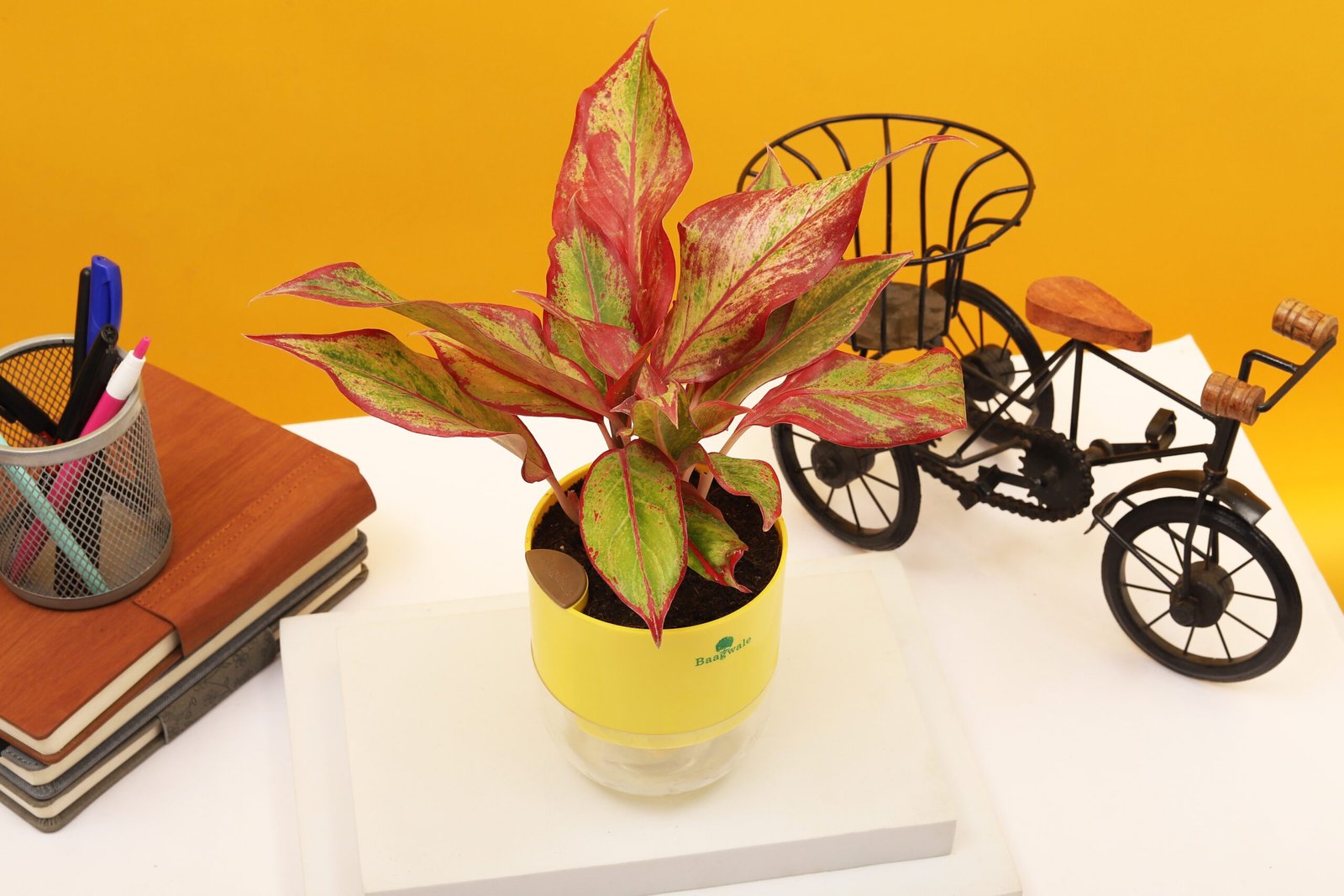What’s in the Box
- Aglaonema Red Plant with Pot: 25- 30 cm
- Pot Size: 4-5 inch diameter
- Soil Media: Coco Peat+Coco Chips+Soil
- Recyclable box
Plant Care.
1. Light:
- Aglaonema Red prefers bright, indirect light. It can tolerate lower light conditions, making it a versatile indoor plant. However, for optimal growth and the brightest red or pink leaf colors, provide bright, filtered light. Avoid direct sunlight, as it can scorch the leaves.
2. Watering:
- Allow the top 1-2 inches (2.5-5 cm) of the soil to dry out before watering. Aglaonema prefers to be kept slightly on the dry side, and overwatering can lead to root rot. Water thoroughly when you do water, and ensure that the pot has proper drainage to prevent waterlogged soil.
3. Humidity:
- Aglaonema Red benefits from higher humidity levels. If your home has low humidity, consider using a humidity tray, room humidifier, or mist the plant occasionally to maintain a humid environment.
4. Temperature:
- Keep your Aglaonema Red in a room with a consistent temperature between 65-80°F (18-27°C). Avoid exposing it to drafts or temperature extremes.
5. Soil:
- Use a well-draining potting mix that retains some moisture but doesn’t become waterlogged. A mix formulated for houseplants works well.
6. Pot and Drainage:
- Ensure the pot has drainage holes to allow excess water to escape. Proper drainage is essential to prevent overwatering.
7. Fertilization:
- Feed your Aglaonema Red with a balanced, water-soluble houseplant fertilizer every 4-6 weeks during the growing season (spring through early autumn). Reduce or eliminate fertilization during the winter.
8. Pruning:
- Trim or prune your plant as needed to maintain its shape and remove any leggy or yellowing stems. This can help promote bushier growth.
9. Repotting:
- Aglaonema Red doesn’t require frequent repotting. Repot when it becomes root-bound or outgrows its container, typically every 2-3 years.
10. Pests and Diseases:
- Check for common houseplant pests like mealybugs, spider mites, and aphids. Treat infestations promptly. Aglaonema Red is generally pest-resistant, but it’s essential to stay vigilant.
With the right care, Aglaonema Red can become a stunning and low-maintenance addition to your indoor space. Its colorful foliage and air-purifying qualities make it a popular choice for homes and offices. Tailor your care routine based on your specific environment and the condition of your plant.
Components of a Self-Watering Pot:
- Reservoir: This is the bottom part of the pot, where water is stored. It typically has a separate compartment with a water level indicator, which helps you monitor the water level easily. The reservoir is usually separated from the plant container by a barrier that prevents the roots from sitting in standing water.
- Plant Container: This is the upper part of the pot where you plant your greenery. It has a growing medium (usually potting soil) and a plant.







Reviews
There are no reviews yet.